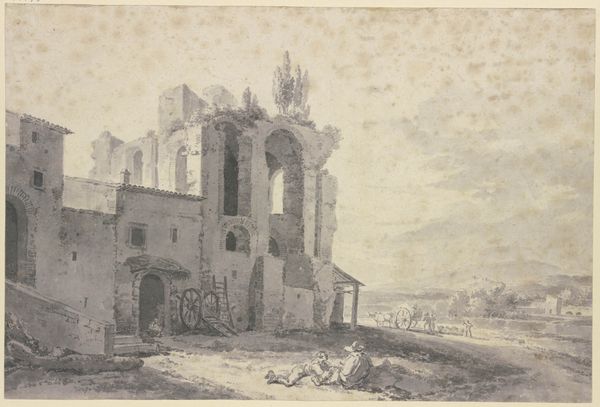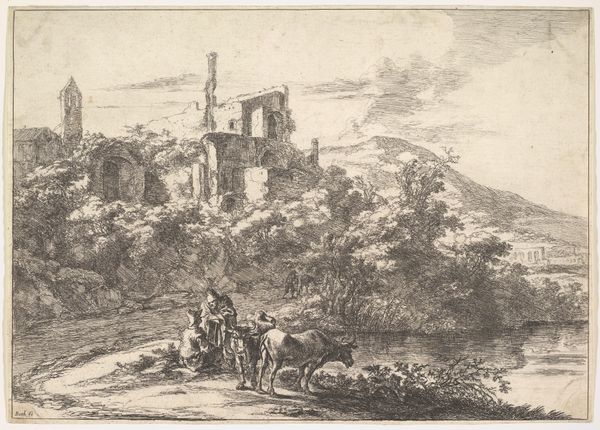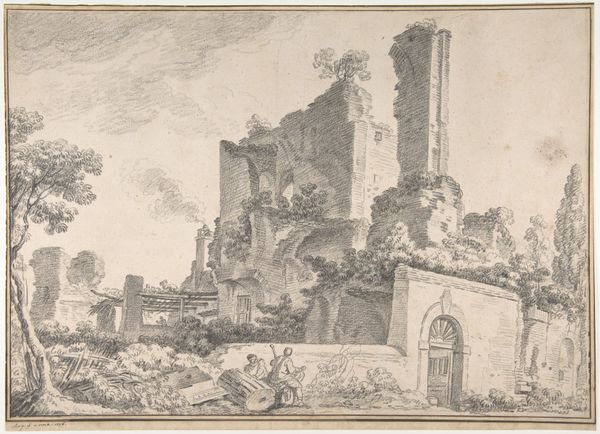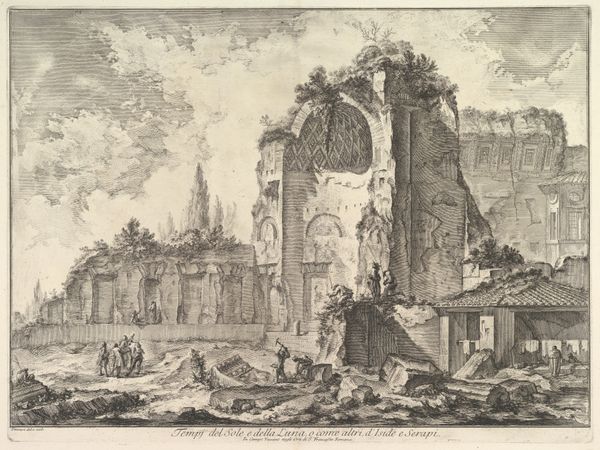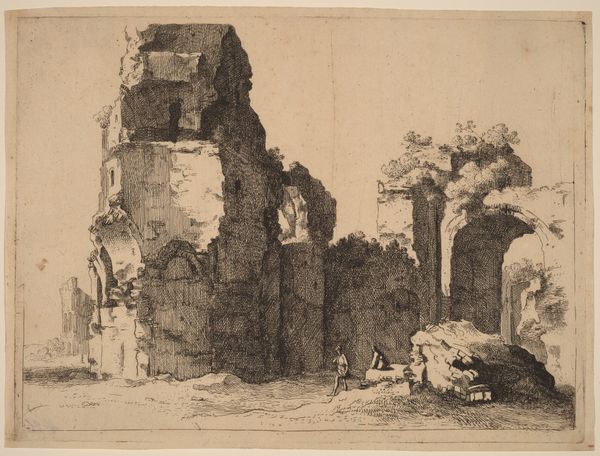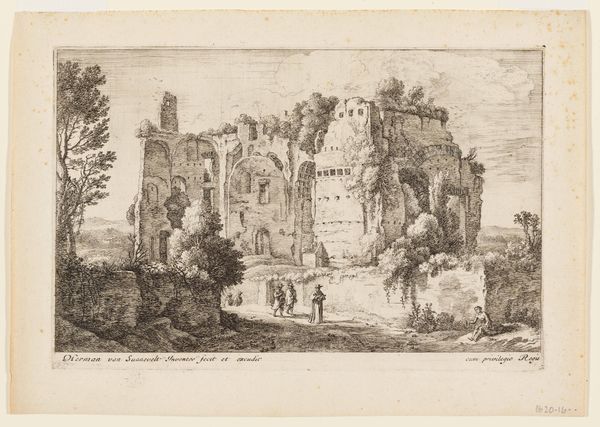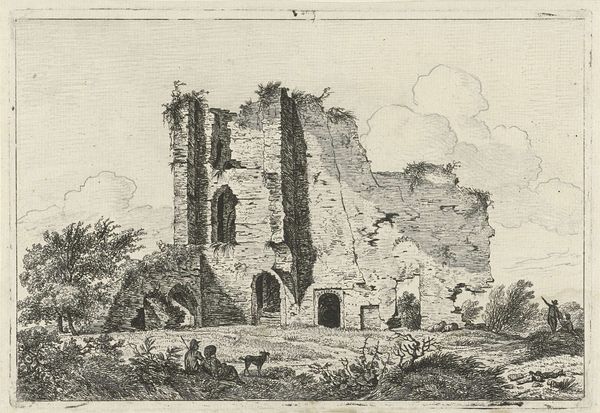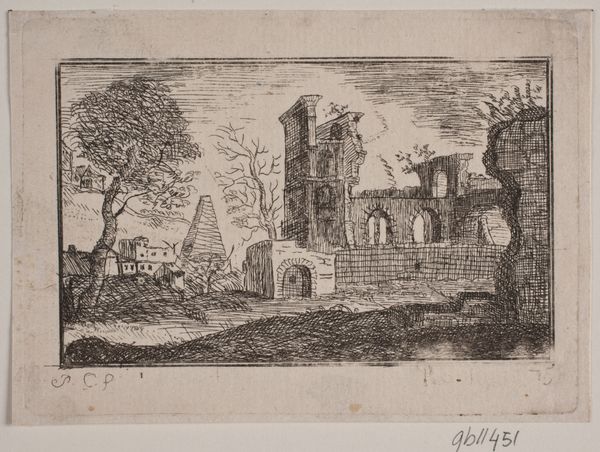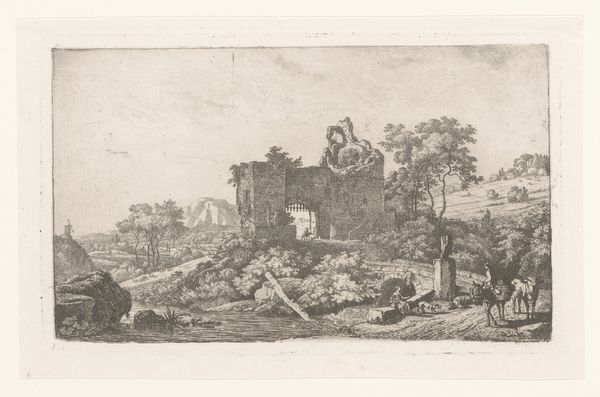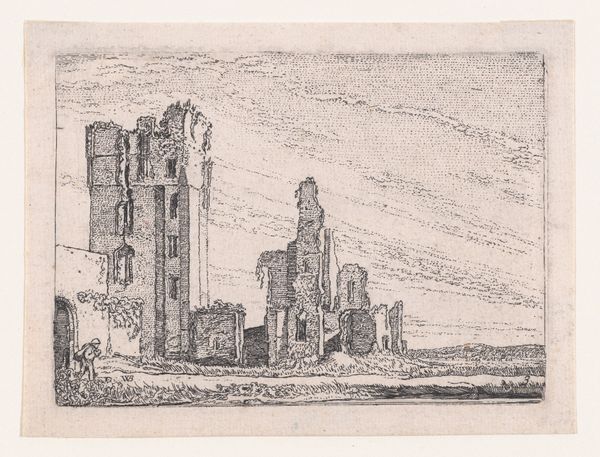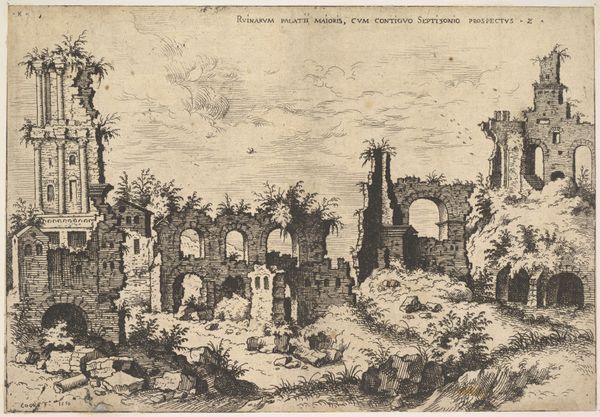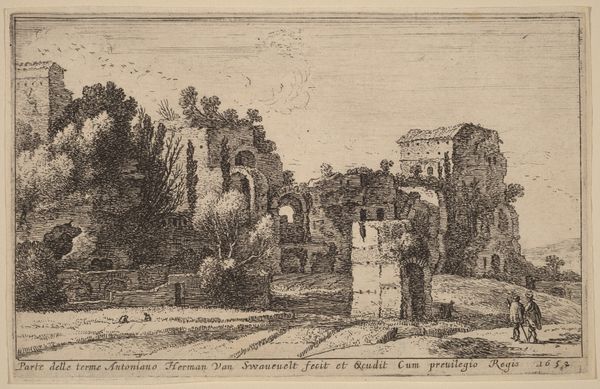
#
pen and ink
#
aged paper
#
toned paper
#
mechanical pen drawing
# print
#
pen sketch
#
pencil sketch
#
old engraving style
#
pen-ink sketch
#
pen work
#
watercolor
Copyright: National Gallery of Art: CC0 1.0
Curator: This captivating print, "Man and Ox in a River" by Jan Smees, uses fine lines of pen and ink to depict a scene both pastoral and ruinous. What strikes you first? Editor: It’s the desolation paired with an unlikely tranquility. The crumbling architecture looming over the quiet scene feels almost apocalyptic, yet the ox and the figure wading in the river suggest a sense of continuity, an ongoing negotiation with nature. Curator: Exactly, there’s this duality embedded in the imagery. The ruins, so evocative of fallen empires, echo classical themes of mortality, yet are softened by the routine crossing of the water, a mundane act amidst grandeur. What of the symbolic weight of these ruins, these remnants of what once was? Editor: I see those crumbling stones not just as symbols of decay, but of power dynamics shifted, stories rewritten by the land and the people who continue to inhabit it. Who built this? Who does this land really belong to now? How are narratives of power always present? Curator: I see your point; this constant reimagining certainly emphasizes that linear time, that “rise and fall”, narrative doesn’t always account for the realities on the ground. This composition isn’t simply melancholic but cyclical. What stories and collective memory do you see reflected in the artist’s meticulous ink work? Editor: Well, this level of careful detail actually pushes me further to think of the legacies that exist here in terms of the ever present power constructs. Perhaps, as the image may lack details about certain aspects related to its origin, that makes these missing origins even more prescient! It allows one to imagine new possibilities and challenge dominant narratives surrounding land, labor, and belonging. Curator: So you're reframing what initially might be considered nostalgia for the past into something very present and active. It feels so different from what the artist, a white European male, could have intended at the time. Editor: Precisely. The artwork, whether consciously or not, captures a moment of transition—between domination and perhaps something more reciprocal between people and place. The ox in the river becomes this very symbol of a labor that endures despite those temporal ruins. Curator: This opens such fertile ground for reinterpretation. By observing familiar symbolic territory of "ruin" and nature, through an intersectional lens, we bring it to vital questions of social and ecological consequence, giving fresh voice to forgotten subjects. Editor: Exactly, and this simple scene becomes something that has much to teach us. The layers in this pen-and-ink drawing echo layers of history and experience that challenge any simplified, colonial story.
Comments
No comments
Be the first to comment and join the conversation on the ultimate creative platform.

